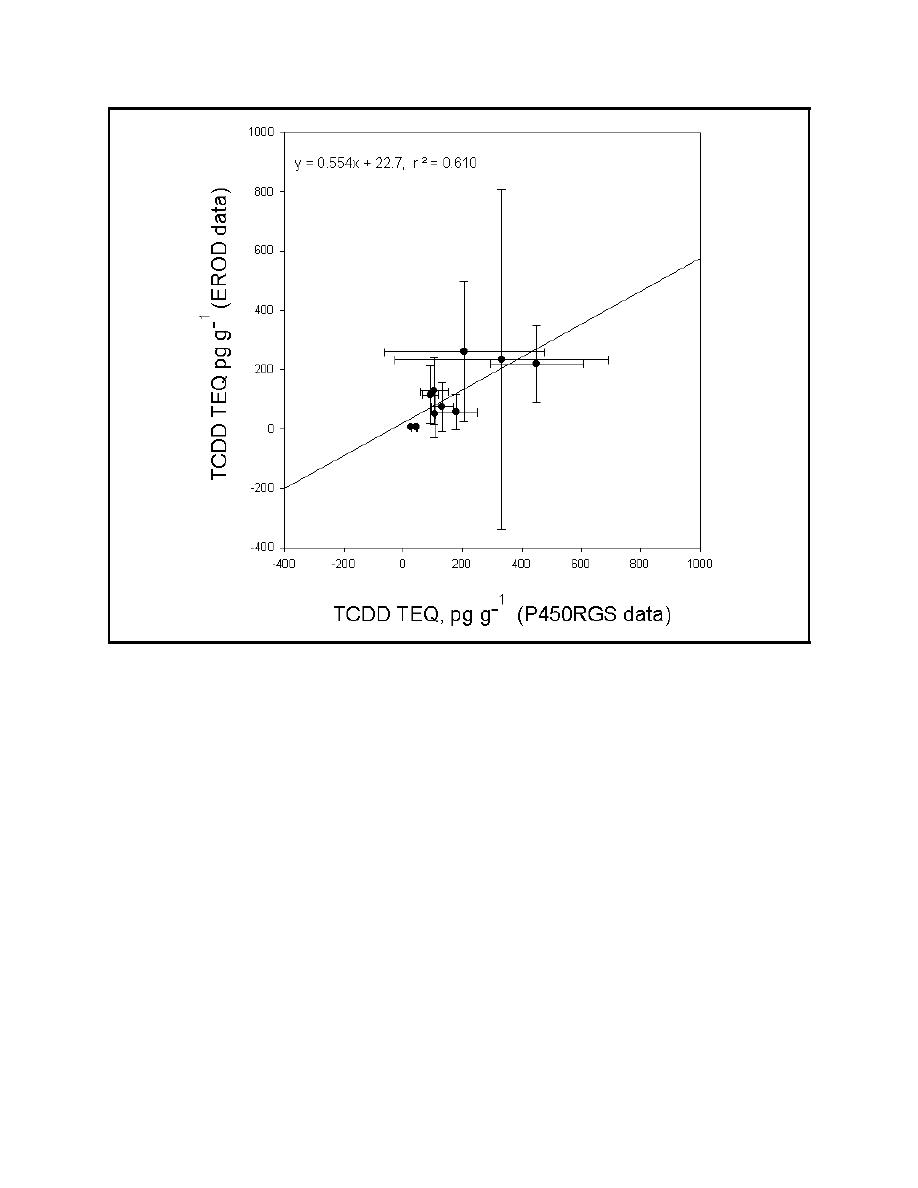 |
||
|
|
||
|
Page Title:
Figure 2. Correlation of P450RGS and EROD assays on 10 SA/SG-cleaned NYDMMP sediment extracts |
||
| |||||||||||||||
|
|
 Technical Note DOER-C8
July 1999
Figure 2. Correlation of P450RGS and EROD assays on 10 SA/SG-cleaned NYDMMP sediment extracts
(Means of six replicates SD)
of P450RGS TEQs with GC/MS TEQs to 0.148 for the comparison of EROD TEQs with GC/MS.
The P450RGS assay produced an approximately 10-fold higher response to the crude extracts than
did the EROD assay, indicating a greater sensitivity to PAHs.
The distribution of contributions of the chlorinated and of the PAH contaminants to TEQs in the
cell-based assays is shown in Table 1. In the crude NYDMMP sediment extracts, the PCDD/PCDF
contributed about one-fourth of the total TEQs with PAHs making up nearly all of the rest. However,
in the cleaned extracts, PCDD/PCDF accounted for approximately 97 percent of the total TEQs,
assuming that all PAHs were removed with the SA/SG cleanup. Because the PAH content was
high, the presence of unknown AhR-active compounds in the crude extracts would not likely affect
the calculated GC/MS TEQs significantly. In contrast, the presence of unknown dioxin-like
compounds in the cleaned extracts could drastically underestimate the GC/MS TEQs. Such
compounds are known to exist and may contribute significantly to toxicity in some environmental
media. For example, polybrominated analogs of PCDD/PCDF have similar enzyme induction
potencies (Mason et al. 1987), and these have been identified in environmental samples (Sellstrom
et al. 1993). The presence of AhR-active compounds in the extracts that were not accounted for in
the chemical analysis may partly explain the poor correlations of TEQs by either assay with TEQs
from sediment chemistry.
5
|
|
Privacy Statement - Press Release - Copyright Information. - Contact Us - Support Integrated Publishing |